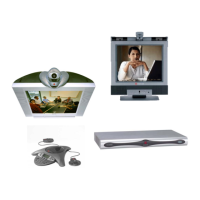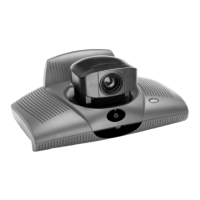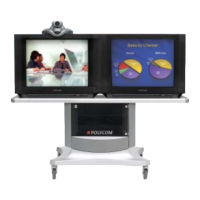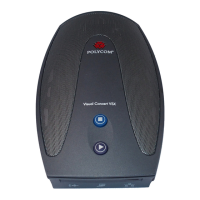ä = 0x84 = 132 → 132 - 132 = 0 = Idle
à = 0x85 = 133 → 133 - 132 = 1 = Transmit
å = 0x86 = 134 → 134 - 132 = 2 = Receive
ç = 0x87 = 135 → 135 - 132 = 3 = Double Talk
So, we know that the AEC on inputs 1-2 are in idle, inputs 3-4 are in transmit, inputs 5-6 are in receive, and
inputs 7-8 are in double talk.
In the above description, the data in the BLDATA command consists of 50 bytes (12 input levels + 12 output
levels + 2 AEC reference levels + 8 room gain levels + 8 AGC gain levels + 8 AEC states). It is possible to tell the
EF2280 to only send a subset of this information. There are two reasons you might want to do this. First, it
makes parsing the data easier since you can ask for only the data that you are interested in. Second, when you
decrease the amount of data being sent, the EF2280 can send the messages faster. This means that if you are
trying to implement a signal level meter, you can get faster refresh rates by asking the EF2280 to only send the
data you're interested in.
Suppose you were only interested in signal levels on inputs A-D. You could send the following command.
F01BLINFO00000000111100000000000000000000000000000000000000
In the above
BLINFO command, there are 1's in the positions of the data that we want and 0's in the positions
of the data that we don't want. Now, when we send a BLDATA? command or enable BLAUTO, the Vortex sends
messages of the form:
F01BLDATAiiii
Where the iiii bytes are the signal levels for inputs A-D. Looking at the BLDATA response above, we see that
it consists of 14 bytes (F01BLDATA = 9 bytes, iiii = 4 bytes, carriage return = 1 byte). If all of the
BLINFO
bits were set to 1, the command would take a total of 60 bytes (F01BLDATA = 9 bytes, data = 50 bytes,
carriage return = 1 byte). In automatic mode (
BLAUTO), the Vortex sends BLDATA commands at a constant
bitrate, so this truncated command would be sent 60/14 = 4.29 times more often than the full version. This
results in a much faster refresh rate.
8.30. BLINFO -- Select Information to be Reported in BLDATA
This command controls which bytes are sent in the BLDATA command. See the description of the BLDATA
command for more information on the BLINFO command.
This command is saved to non-volatile memory only as part of a preset. The state of this command will be
restored after power-up only if a preset is saved and that preset is set to be the power-on preset.
8.31. BROAD2 -- Broadcast Arbitrary Command Strings to RS-232
Port
This command is used to broadcast arbitrary commands to the RS-232 port for controlling other devices (not
necessarily other Vortex devices). For example, 'F01BROAD2:ATDT4048921180 ' ' ' ' ' would cause the Vortex

